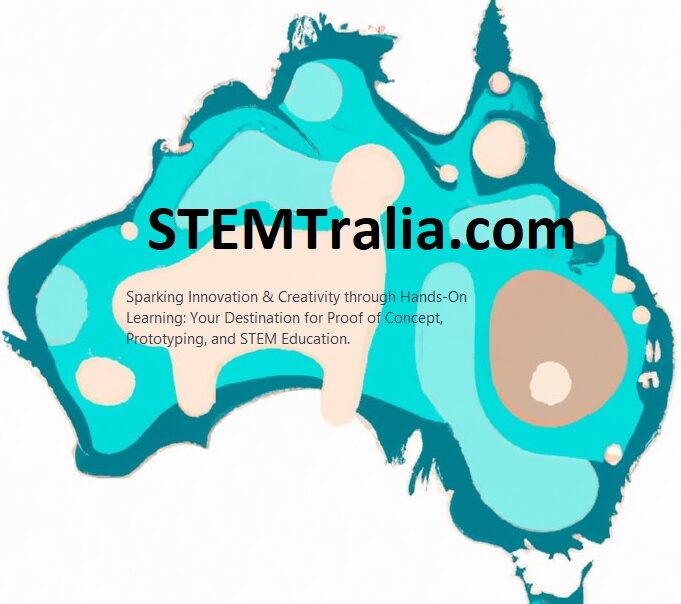Overview
This project introduces an exciting application of machine learning (ML) to the field of economics, specifically in forecasting GDP growth rates using historical data. Machine learning is a subset of artificial intelligence (AI) that enables computers to learn from data and make predictions or decisions without being explicitly programmed for specific tasks. In simpler terms, it’s like teaching a computer to recognize patterns and use these patterns to predict future events.
In the context of this project, we use machine learning models to analyse past economic data—such as GDP growth rates, unemployment rates, retail turnover, and the consumer price index (CPI)—to predict future changes in the economy. This method involves using statistical techniques to understand the relationship between various economic indicators and how they collectively impact GDP growth. By training a machine learning model with data from the Australian Bureau of Statistics (ABS), students will learn not only the basics of economic forecasting but also gain hands-on experience in applying cutting-edge technology to solve real-world problems.
Designed for a broad audience, including those without a technical background, this project demystifies the concept of machine learning and showcases its practical applications in understanding and predicting economic trends.
Required Datasets
Participants will use publicly available datasets from the ABS, focusing on:
- GDP growth rates: click here to download latest release directly from the ABS.
- Unemployment rates: click here to download latest release directly from the ABS.
- Retail turnover: click here to download latest release directly from the ABS.
- Consumer Price Index (CPI): click here to download latest release directly from the ABS.
These datasets should be prepared in a clean, accessible format (such as CSV) for analysis using Python programming tools.
How to Implement Machine Learning Model
The implementation is divided into five key steps, guiding participants from data exploration to making informed predictions:
Step 1: Introduction and Data Exploration
Begin with an overview of economic indicators. Use Python’s Pandas library for data exploration and Matplotlib/Seaborn for visualizing the data, helping to identify trends and patterns.
Step 2: Data Preprocessing
Prepare the data for the ML model by cleaning it (addressing missing values and outliers) and selecting which economic indicators to use as predictors for GDP growth.
Step 3: Building the ML Model
Introduce linear regression, a straightforward yet powerful ML technique for forecasting. Participants will train their model using scikit-learn, a Python library, by splitting the dataset into parts for training and testing.
Step 4: Model Evaluation
Evaluate the model’s accuracy using metrics such as R-squared and Mean Squared Error (MSE). Discuss how well the model predicts GDP growth and explore ways to enhance its performance.
Step 5: Application and Critical Analysis
Use the model to forecast GDP growth under different economic scenarios. Encourage a discussion on the implications of these forecasts for economic policy and personal decision-making.
Deliverables
The project culminates in a comprehensive Jupyter Notebook (free for all to use) documenting the process from start to finish, accompanied by a presentation or report summarizing key findings, model performance, and insights into GDP growth forecasting.
This project serves to illustrate the power and potential of machine learning in economic analysis, making it accessible to learners from all backgrounds and skill levels.
the project outlined above serves as a practical example of the Data, Information, Knowledge, Wisdom (DIKW) hierarchy, a model used to describe the ways in which data is transformed into more useful forms of understanding and insight. Here’s how the project aligns with the DIKW hierarchy:
How does the above project implement DIKW Hierarchy:
Data
The raw economic indicators from the Australian Bureau of Statistics (ABS), such as GDP growth rates, unemployment rates, retail turnover, and the Consumer Price Index (CPI), represent the Data layer. At this stage, the data is unprocessed and lacks context.
Information
When we preprocess this data (cleaning and organizing it) and conduct initial explorations (such as visualizing trends over time), we are turning data into Information. This step involves structuring the data in a way that makes it easier to understand and identifies basic patterns or anomalies.
Knowledge
The Knowledge stage is reached through the building and training of the machine learning model, where we apply statistical methods to predict future GDP growth based on historical data. At this point, we understand not just the patterns but also the relationships between different economic indicators and how they collectively impact GDP growth. This allows us to make informed predictions about future economic conditions.
Wisdom
Wisdom is achieved when we use the model’s predictions to make informed decisions or policy recommendations. This involves interpreting the model’s forecasts, understanding their potential implications for economic policy and personal financial decision-making, and considering ethical and societal impacts. Wisdom is characterized by the application of knowledge in a way that acknowledges uncertainty and considers broader contexts and long-term outcomes.
This project exemplifies the DIKW hierarchy by demonstrating how raw data can be systematically transformed into actionable wisdom, highlighting the process of turning quantitative inputs into qualitative decision-making tools. It showcases the journey from collecting and cleaning data to applying advanced analytical techniques and, ultimately, to making informed, wise decisions based on the insights derived.
